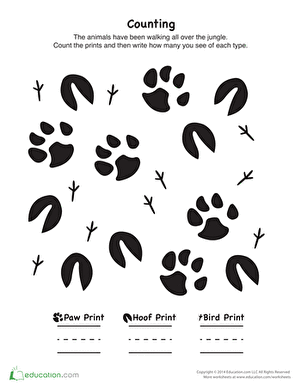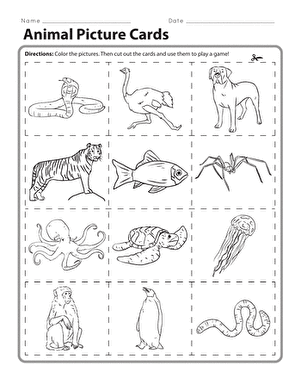Science project
Animal Tracks and Types of Soil
Squish, squash—who’s been stepping in the sand? Experiment with different types of soil and see how each type affects an animal’s tracks.
Problem:
How does the shape of a track vary when imprinted in wet and dry sand, mud, and dry soil?
Materials:
- Book about animal tracks
- 4 flat containers that are large enough for your hand
- 1 bag of sand
- Sprayer
- Sink
- Towel
- 1 bag of potting soil
- Notebook and pencil
- Camera
Procedure:
Why are some tracks easy to see and some really difficult? In this experiment, you’ll unearth the mystery of tracks.
- Let’s get tracking! First, create your four types of soil. Get four containers that are large enough for your hand to fit into easily. You’ll be filling these with different types of soil.
- Put at least an inch of dry sand into the first container and smooth it until it is flat. Do the same with the second container. In the third container, put an inch of potting soil and smooth it as well. Do the same with the fourth container.
- Make two of your containers damp: Spray the first container of sand with your sprayer until the sand is quite wet. Spray the first container of soil with your sprayer until the soil is quite wet. Now you have damp sand and mud.
- Create a hypothesis, your best guess about what is going to happen. What do you think your handprints will look like if you place them in dry sand? Wet sand? Mud? Soil?
- Now, make sure your hands are dry. First, press your hand into the dry sand and move it out quickly. Next, press your hand into the dry soil. Wipe off any extra soil with the towel.
- Then move over to the wet sand. Press your hand into the wet sand, and then dry it off. Next, press your hand into the mud. Clean off your hands when done.
- What do your handprints look like? Draw each one or take a photo of it. How are are they different? How are they the same?
- Go out onto a muddy path, visit a beach, or go to another place that has tracks. How do tracks look different in different types of soil?
Results:
Dry sand and soil will cave in a little around the edges. Wet sand will fall in clumps, while wet soil will hold the image of the track.
Why?
When you’re tracking animals, you need to think about more than just what an animal’s footprint looks like. You also have to consider what the animal was stepping in.
What does dry sand feel like when you move it through your hands? It runs easily through your fingers. The same thing happens when you press into it to create a track. The sand moves away from your fingers, but then much of it slides back into its original position.
What does wet sand feel like? It’s very firm. If you’ve ever seen animal tracks or human footprints on a beach, you’ll notice that they’re quite clear when the sand is damp, but as it dries out, the sand tends to shift back to where it was before. It can also blow away in the wind.
Soil contains more humus, or organic material like leaves and sticks. This gives it a springy, spongy feeling that sand doesn’t have. This also helps animal tracks to stay visible in the soil. If you press your hand in dry soil that has some organic material in it, you will find that it acts a little bit like dry sand. However, it also feels a little squishy and bounces back at the touch.
Soil that is damp or muddy is one of the best types of soil for finding animal tracks. When you squish your hand or foot into damp soil, the print you make will probably stay there for a long time. It’s only when the soil dries up that the track starts to crack.
With your new tracking knowledge, find a muddy spot and see if you can figure out who’s been there— you might be surprised by what you find!
Education.com provides the Science Fair Project Ideas for informational purposes only. Education.com does not make any guarantee or representation regarding the Science Fair Project Ideas and is not responsible or liable for any loss or damage, directly or indirectly, caused by your use of such information. By accessing the Science Fair Project Ideas, you waive and renounce any claims against Education.com that arise thereof. In addition, your access to Education.com's website and Science Fair Project Ideas is covered by Education.com's Privacy Policy and site Terms of Use, which include limitations on Education.com's liability.
Warning is hereby given that not all Project Ideas are appropriate for all individuals or in all circumstances. Implementation of any Science Project Idea should be undertaken only in appropriate settings and with appropriate parental or other supervision. Reading and following the safety precautions of all materials used in a project is the sole responsibility of each individual. For further information, consult your state's handbook of Science Safety.













